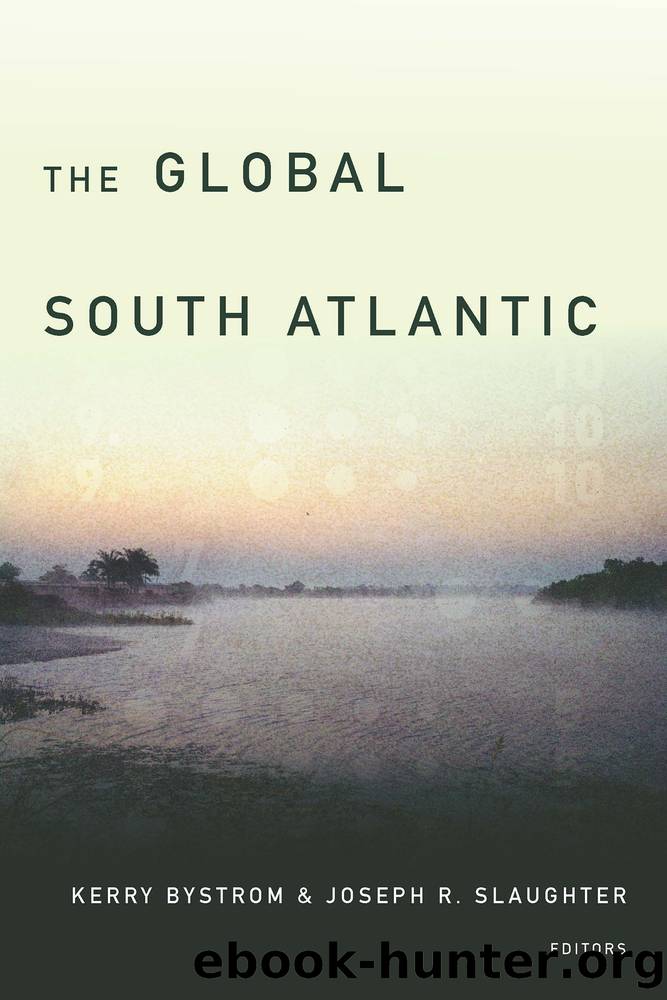The Global South Atlantic by unknow

Author:unknow
Language: eng
Format: epub
Publisher: Fordham University Press
Published: 2018-03-15T00:00:00+00:00
The Violence of Representation and the Representation of Violence
In MajmaÊ¿ al-Asrar, Khoury makes intertextual references to various European and Middle Eastern texts, both classical and contemporary, but engages most deeply with the Latin America text Crónica de una muerte anunciada. Supported by various references to the title and author of the Colombian text, as well as extensive quotes from the Arabic translation of that text, Khouryâs novel builds on various of Crónicaâs themes as it recounts the experiences in Beirut of Ibrahim Nasar, a cousin of Santiago Nasar imagined by Khoury. In MajmaÊ¿ al-Asrar, Khoury creates a broader picture of the Nasar family and its origins and, through a letter that he has the Colombian branch of the family write to the branch that stayed in Lebanon, he has the fate of one cousin affect that of the other.18
MajmaÊ¿ al-Asrar begins and ends in an eight-day period in 1976 during which Ibrahim mysteriously dies. Yet the text includes Ibrahimâs experiences as a child from 1946 to 1948 and at times reaches back to the midânineteenth century, and even before, as it recounts the dubious history of the family. Before Ibrahimâs death he searches for the letter his family had received when he was a child, the letter from relatives in Colombia that brought the news of Santiagoâs murder and changed the lives of Ibrahim and his family by convincing them not to emigrate. This is but one of the many episodes in which the narrator leads us, in vain, on a quest to uncover the secrets that underlie the relationships at the center of the novel: the love triangle between Ibrahimâwho dies before fulfilling his promise to marry Norma; Normaâwho lost her virginity to either Ibrahim or his friend Hanna; and Hannaâan old friend of Ibrahim who continues his relationship with Norma after marrying another woman and survives a mistaken murder accusation and police torture. The historical periods that Khoury depicts are ones of sociopolitical tension and devastating violence: the midânineteenth century conflicts between the Druze, Maronites, and Ottoman forces, the end of the French Mandate in the 1940s, the 1958 political crisis and attempted coup, and the outbreak of the Lebanese civil war in 1975. The novel consists of several interwoven stories presenting different perspectives on the events in order to explore violence and group dynamics, Otherness, the multiple nature of truth, and South-South relations.
Through intertextual references to French Algerian Albert Camusâs LâÃtranger (The Stranger, 1942), extended engagement with GarcÃa Márquezâs novella, and a storyline that includes political strife, police brutality, violent sexual relationships, and social oppression, Khouryâs novel moves beyond the small-town frame of the Colombian text and explores how private, everyday violence as well as large-scale group violence come about. Intrinsic to this is the attention to Otherness, such that Khouryâs narrator ponders why difference often meets with a violent response and what exactly constitutes difference, or the status as âstranger.â These reflections are enabled and enhanced by taking into account multiple perspectives. The various versions of reality that emerge point to the contingent, plural, and even fictional nature of truth.
Download
This site does not store any files on its server. We only index and link to content provided by other sites. Please contact the content providers to delete copyright contents if any and email us, we'll remove relevant links or contents immediately.
Kathy Andrews Collection by Kathy Andrews(10521)
The remains of the day by Kazuo Ishiguro(7552)
Spare by Prince Harry The Duke of Sussex(4199)
Paper Towns by Green John(4169)
The Body: A Guide for Occupants by Bill Bryson(3802)
Be in a Treehouse by Pete Nelson(3214)
Harry Potter and the Goblet Of Fire by J.K. Rowling(3046)
Goodbye Paradise(2964)
Never by Ken Follett(2884)
Into Thin Air by Jon Krakauer(2703)
The Remains of the Day by Kazuo Ishiguro(2620)
The Genius of Japanese Carpentry by Azby Brown(2609)
The Cellar by Natasha Preston(2595)
Drawing Shortcuts: Developing Quick Drawing Skills Using Today's Technology by Leggitt Jim(2532)
120 Days of Sodom by Marquis de Sade(2439)
Architecture 101 by Nicole Bridge(2351)
The Man Who Died Twice by Richard Osman(2300)
Machine Learning at Scale with H2O by Gregory Keys | David Whiting(2293)
Fairy Tale by Stephen King(2073)
